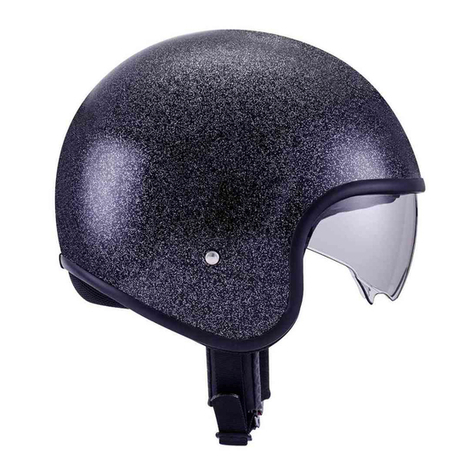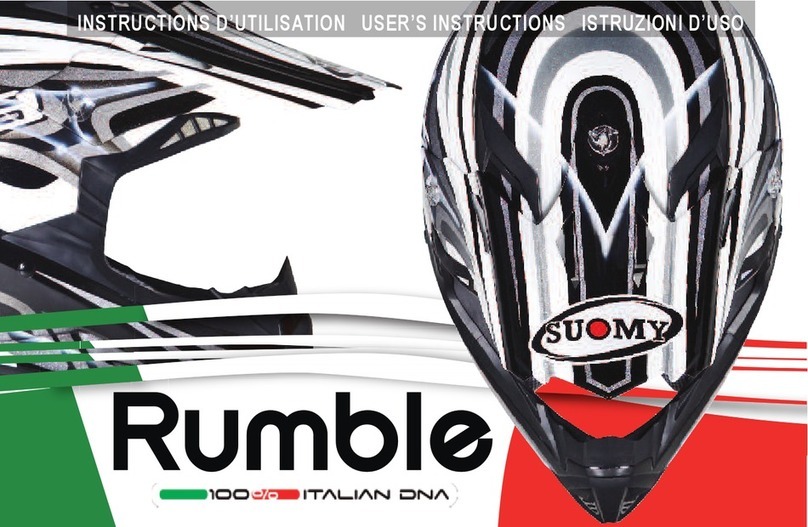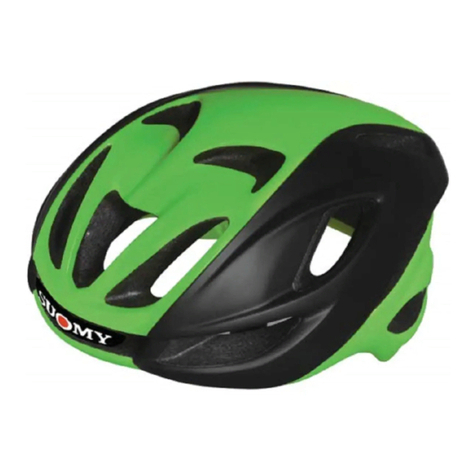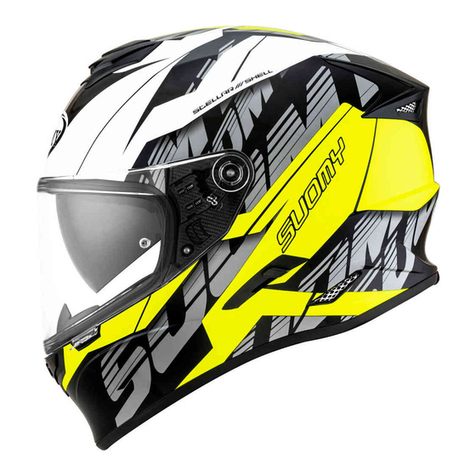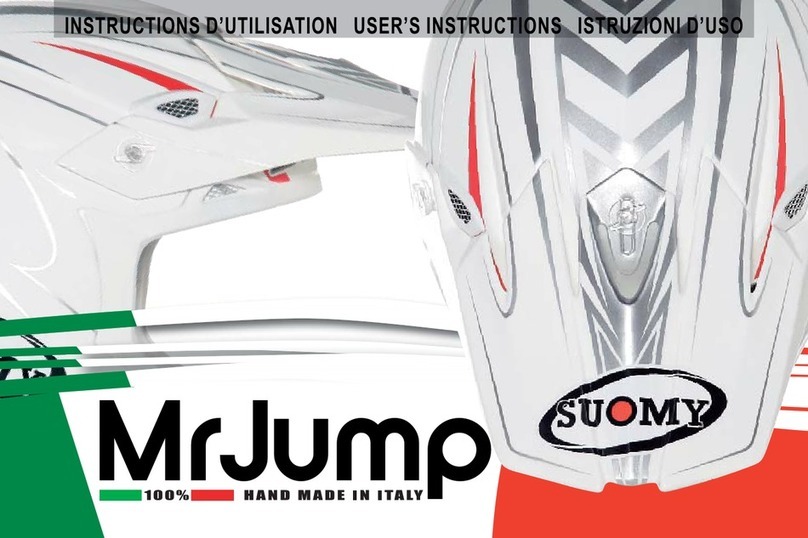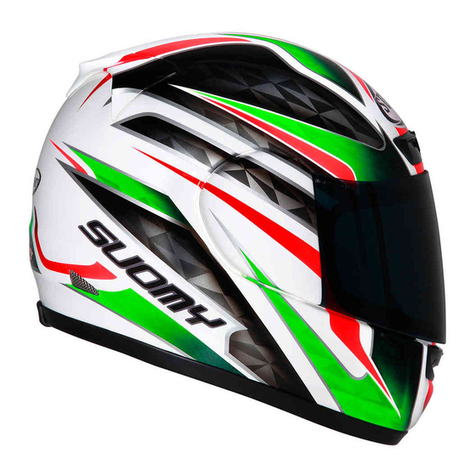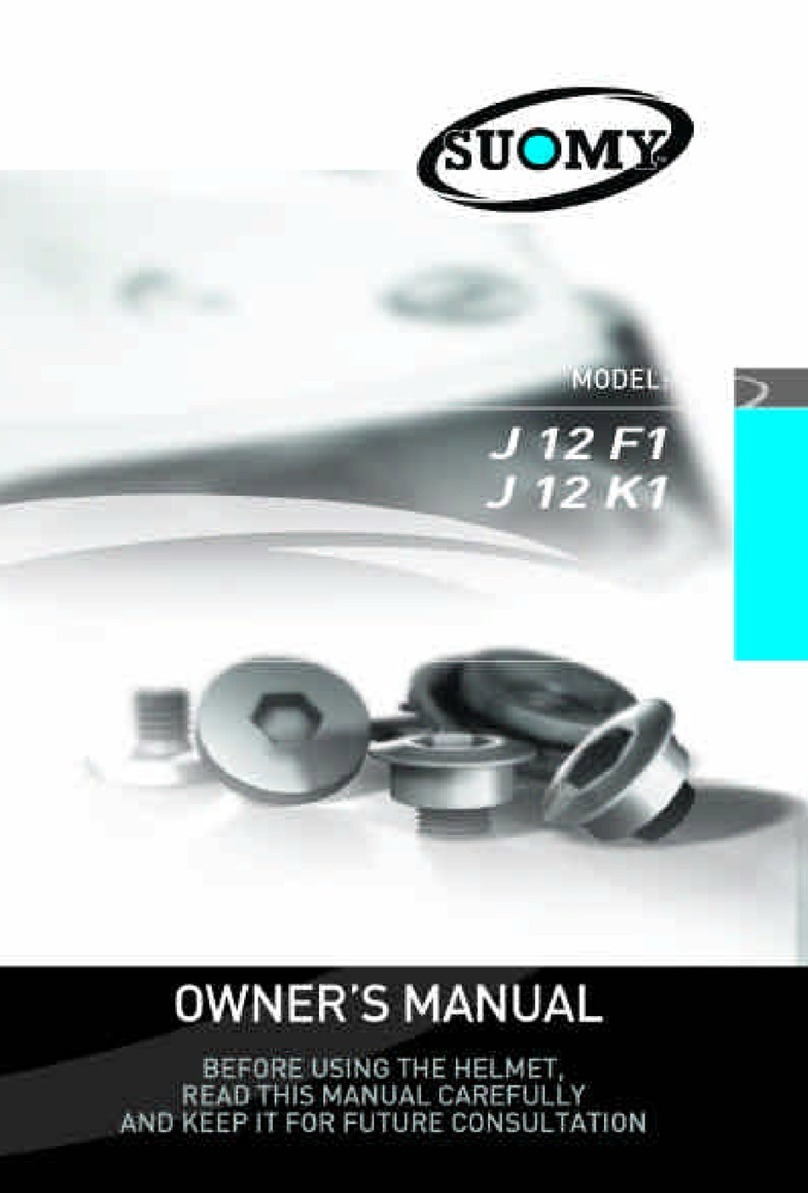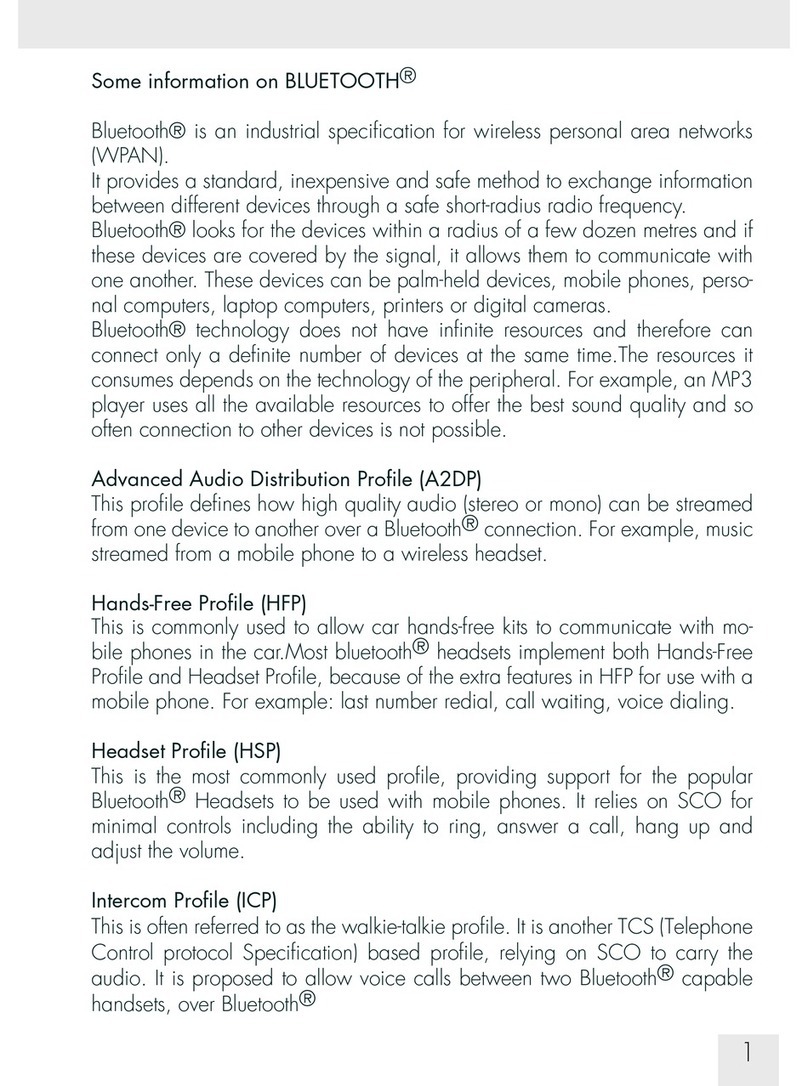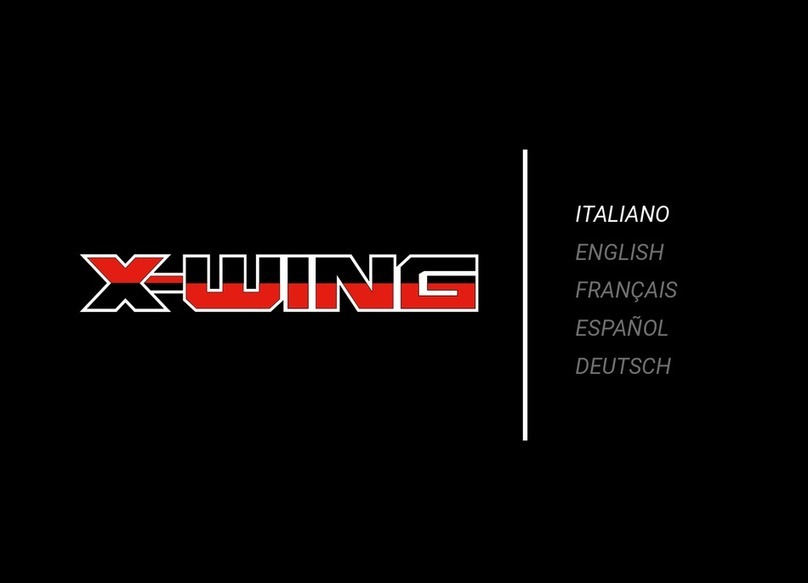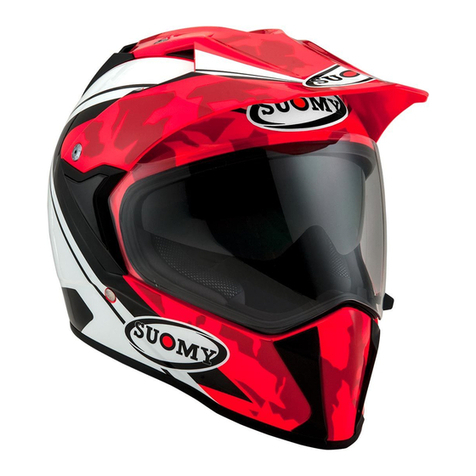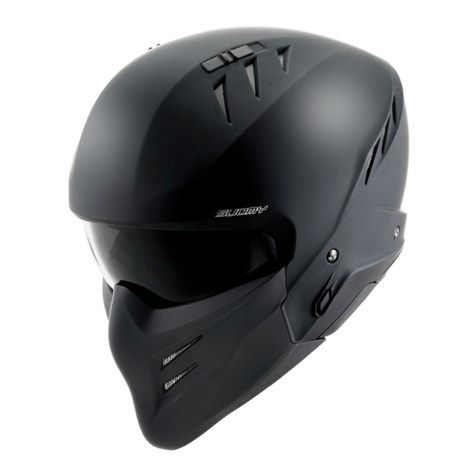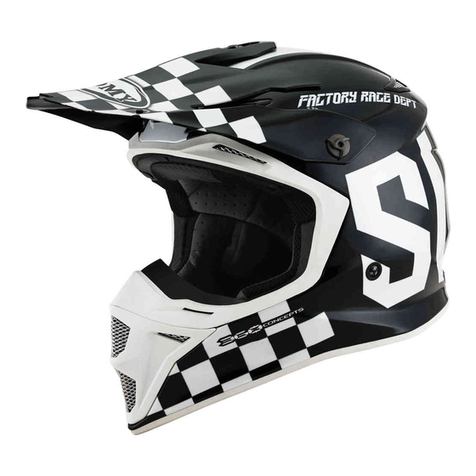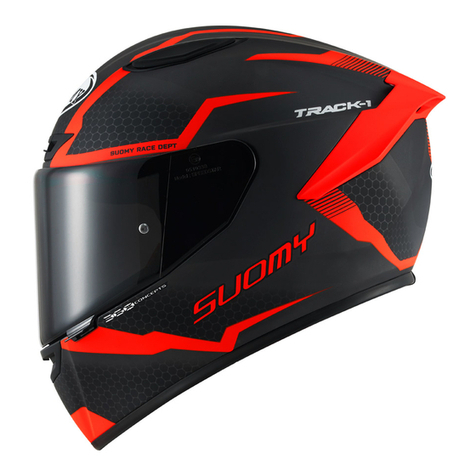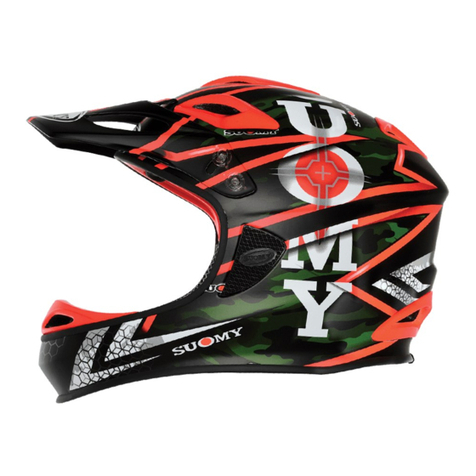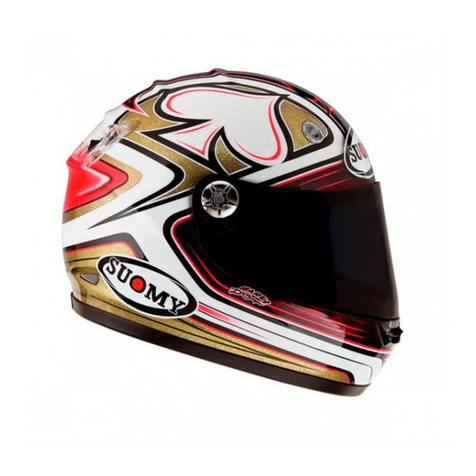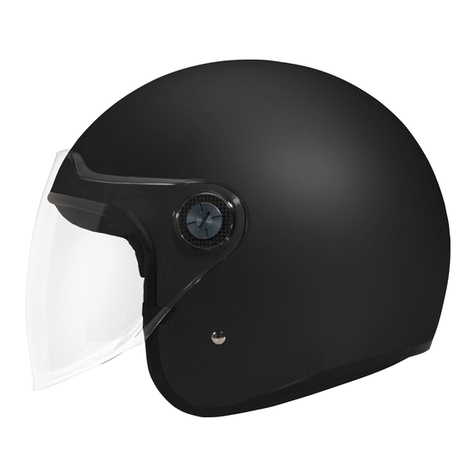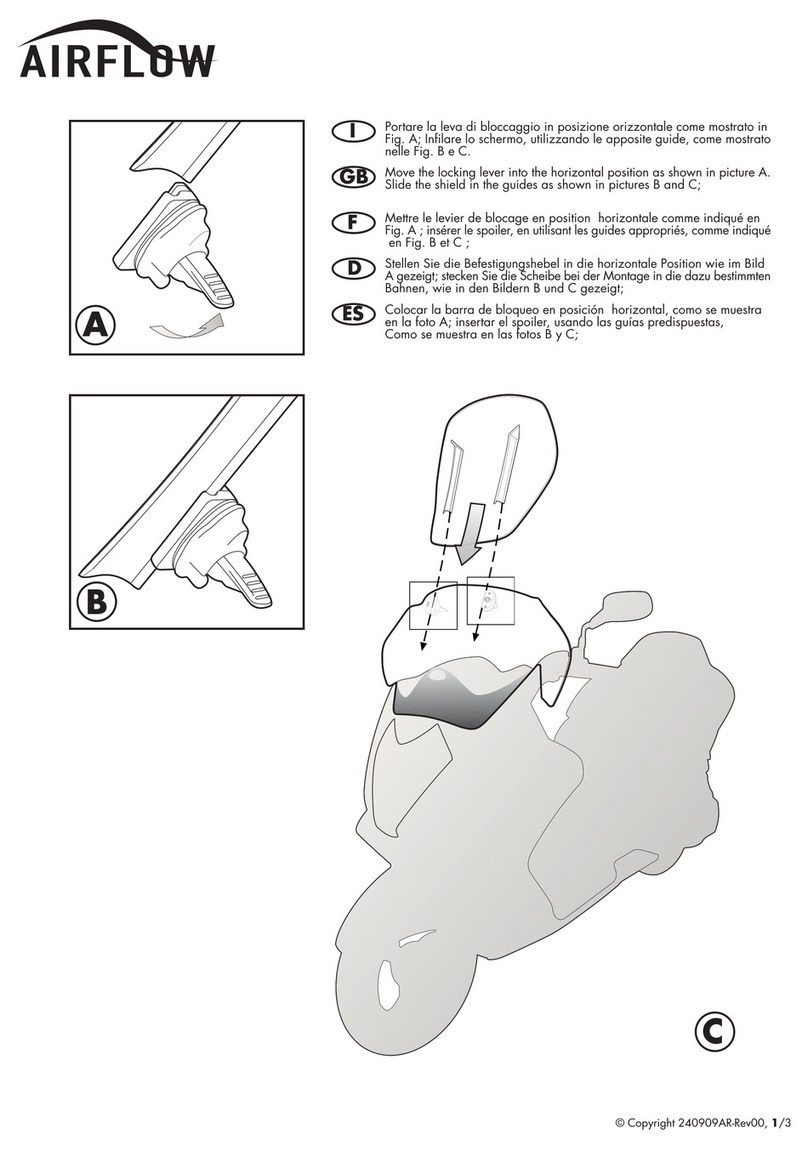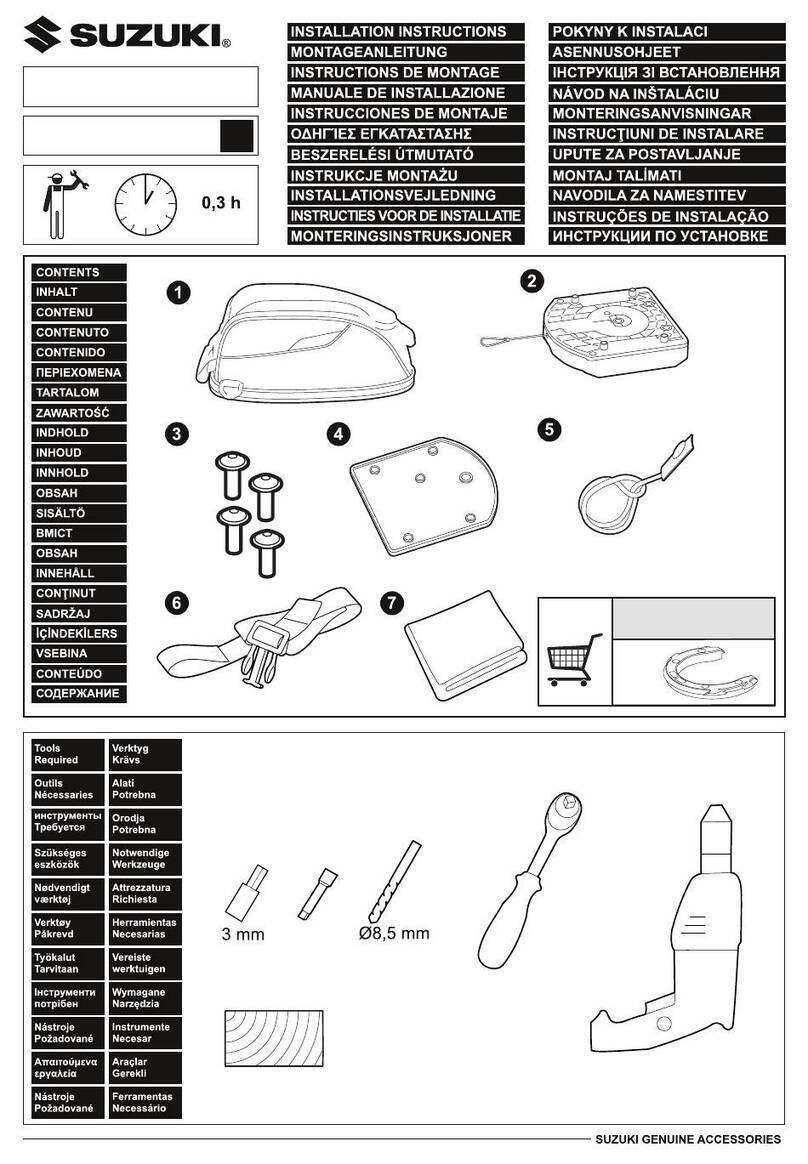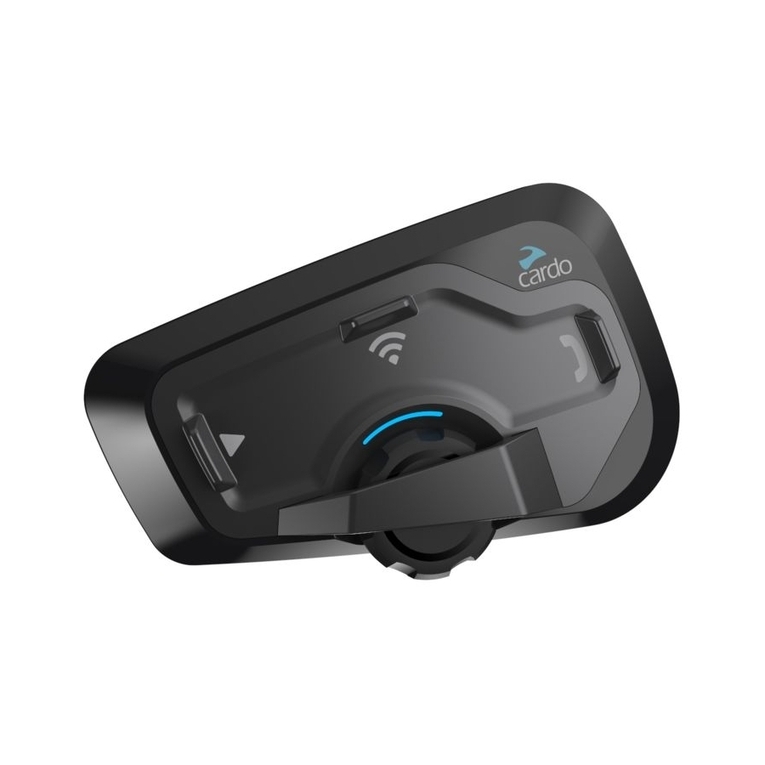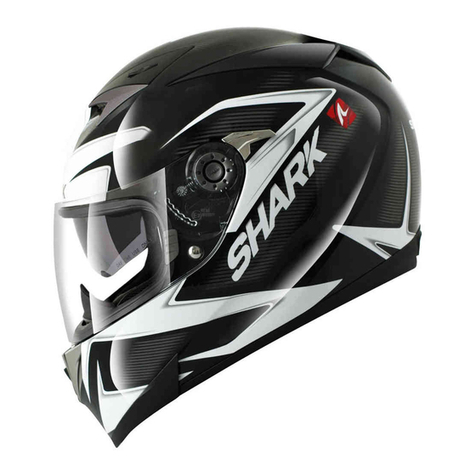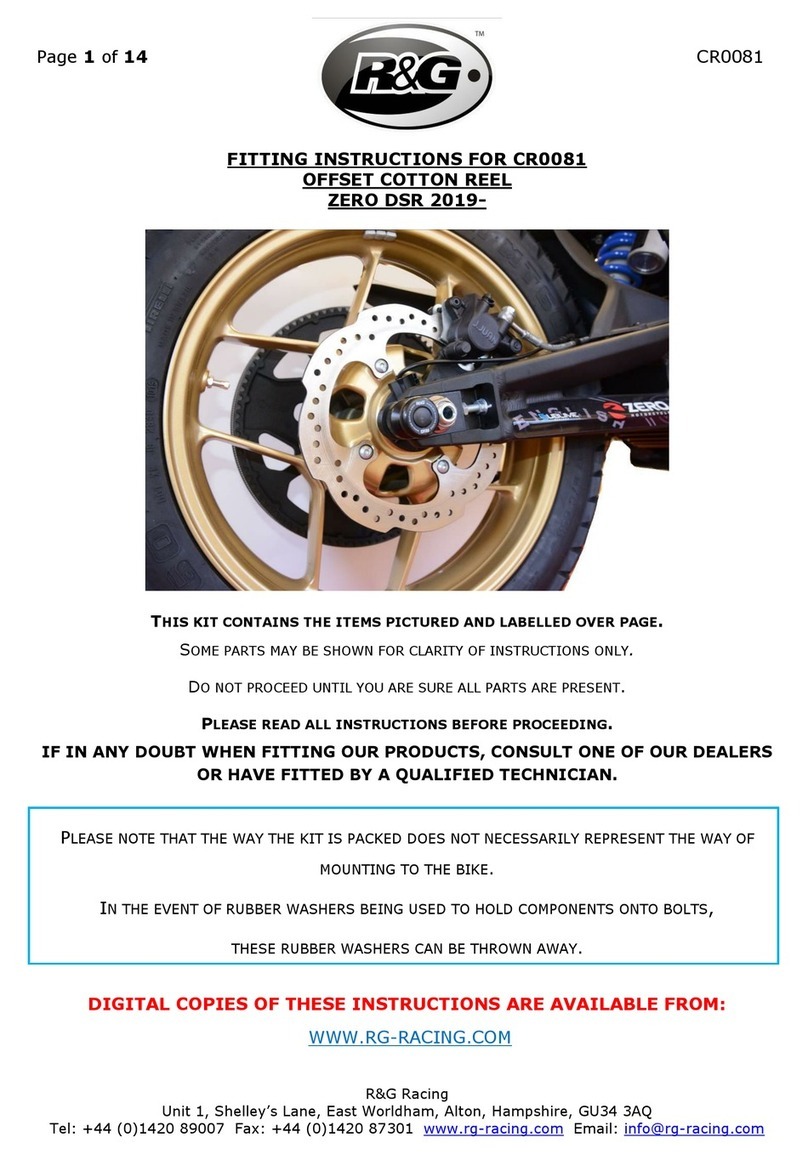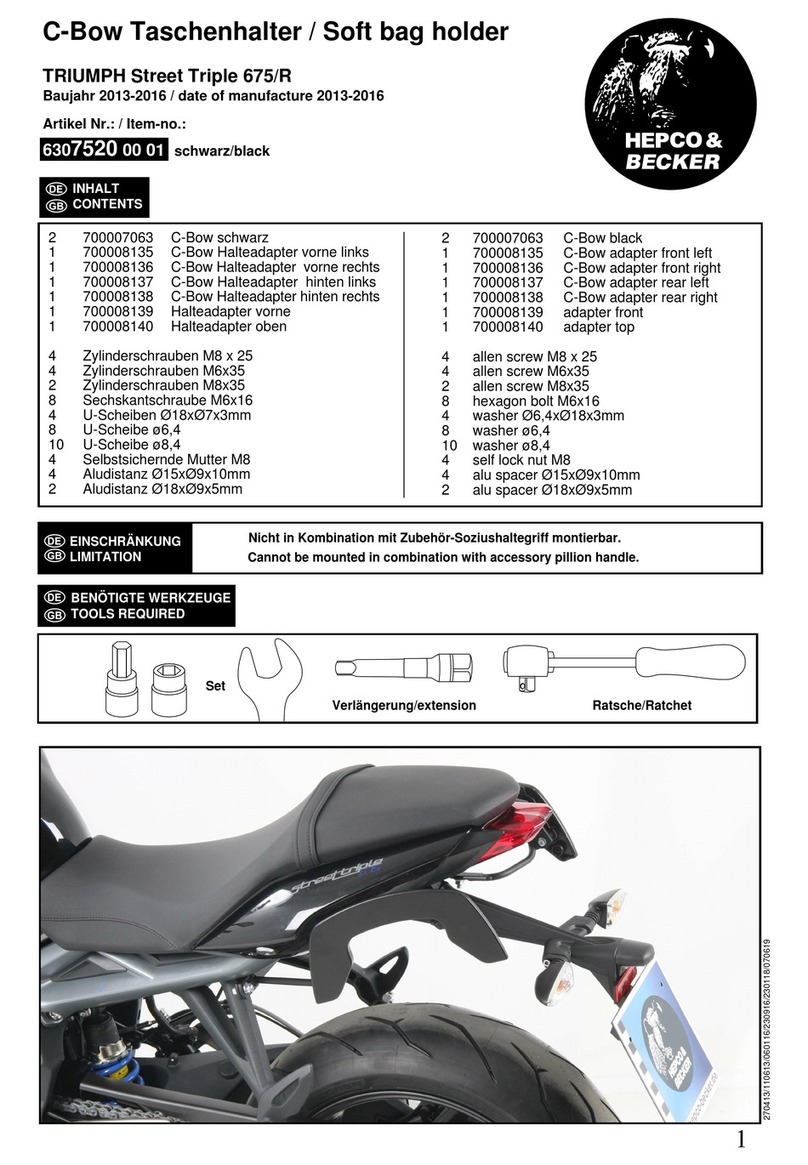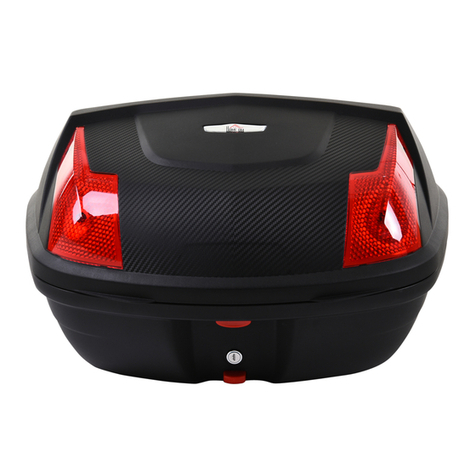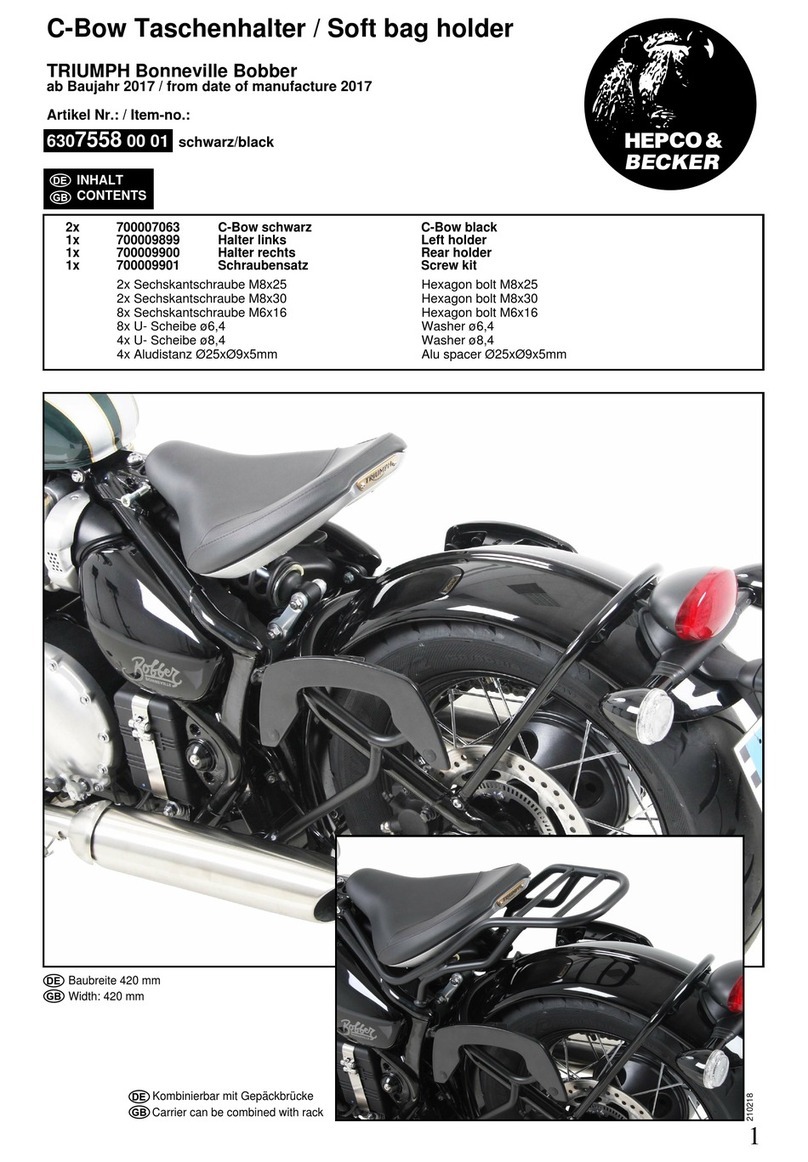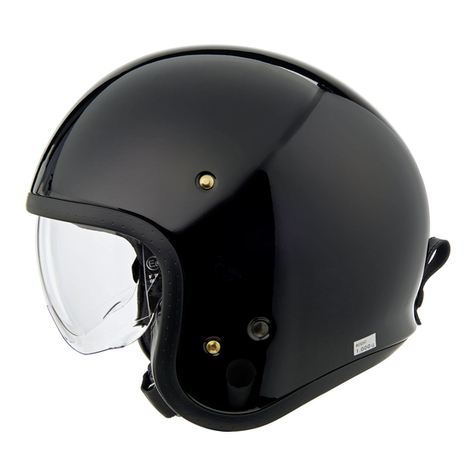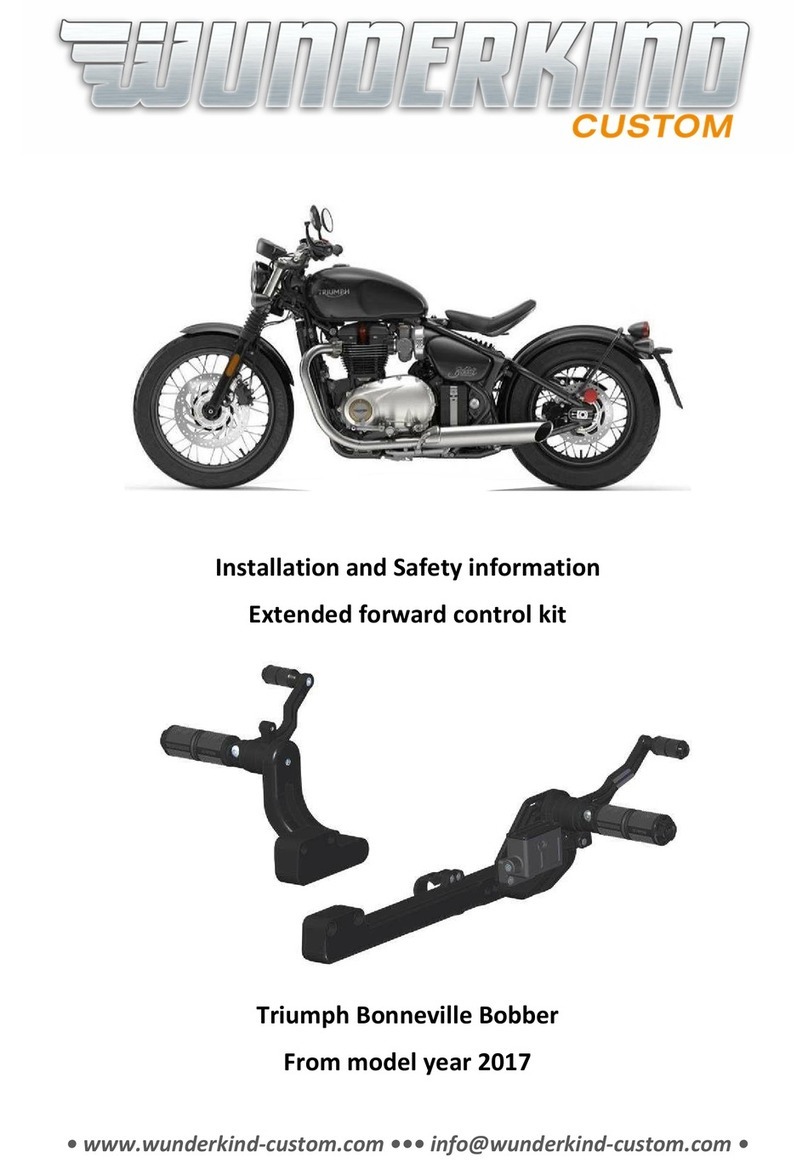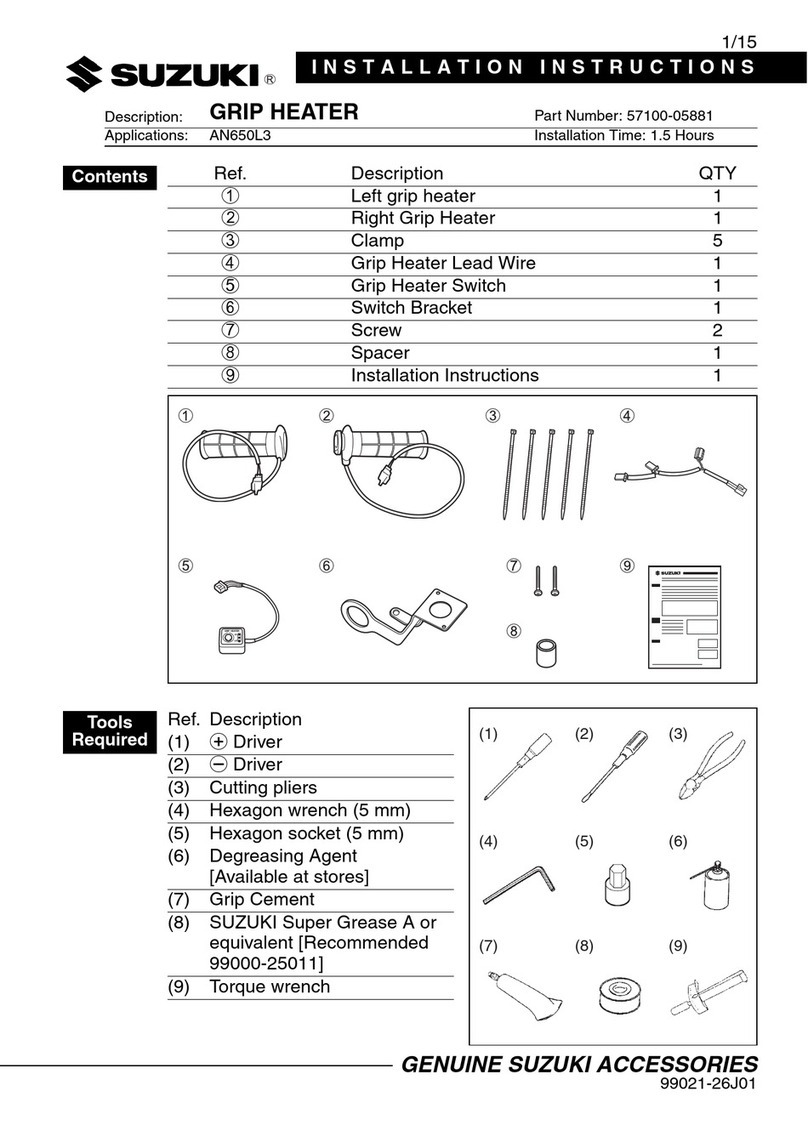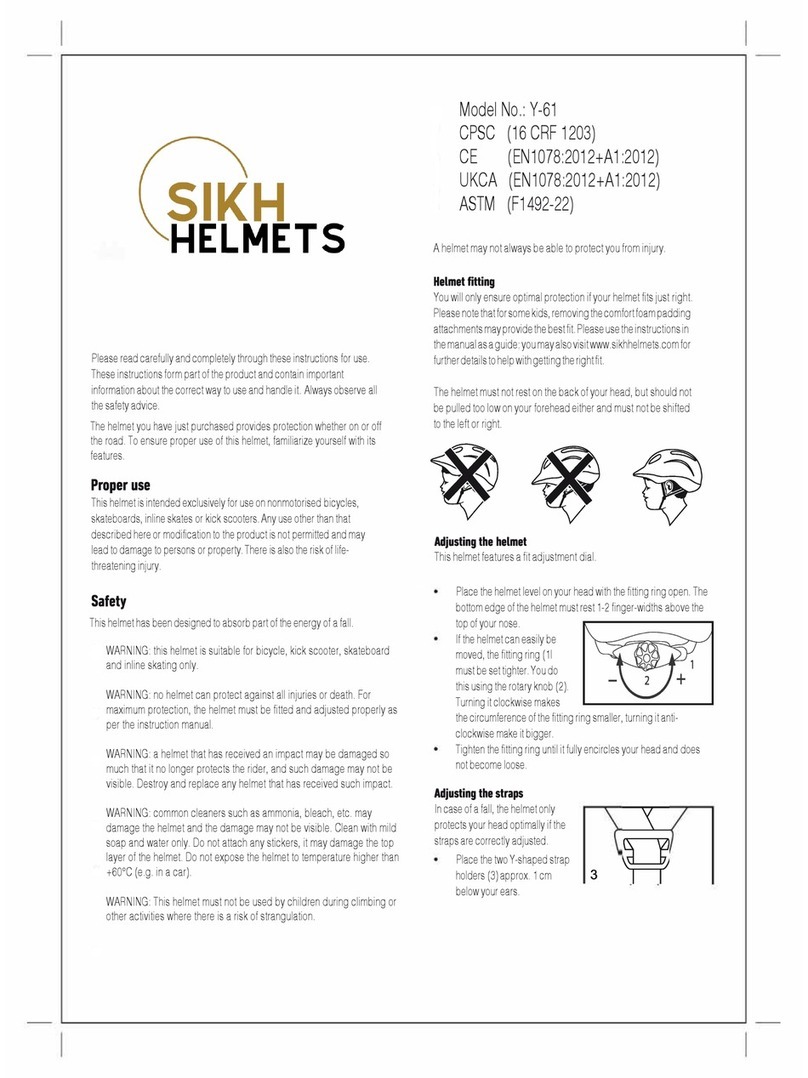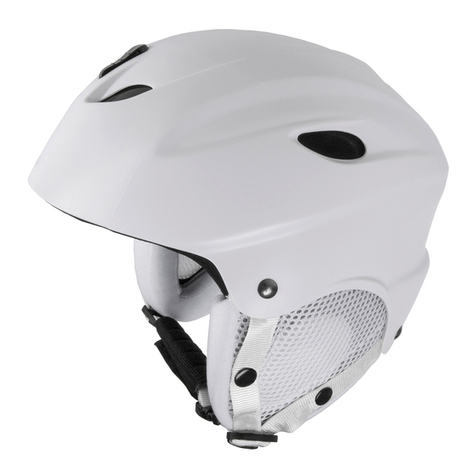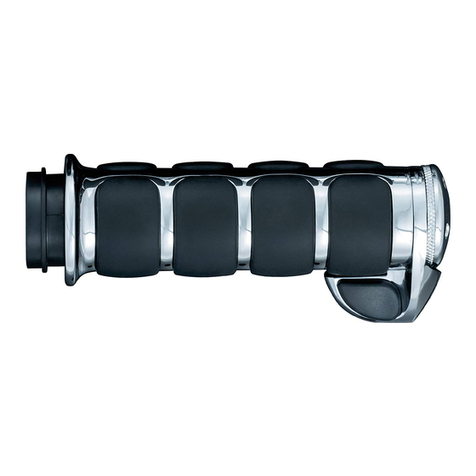
Do not apply paint and/or adhesives on the visor.
Only use original Suomy accessories and spare parts or those specifically indicated by Suomy for the specific model: this is the only way to
assure reliability, safety and compatibility with the helmet used.
The use of non original components and/or accessories make the warranty void (see warranty conditions on page 31) and can affect
the safety requirements.
MAINTENANCE
To clean the shell use water and mild soap; let the helmet dry at room temperature, never expose it to heat.
Cleaning the helmet with solvents, petrol by-products or chemical substances, the application of stickers or paint could affect the structure of
the shell, thus affecting the safety features, even if the damage is not readily visible.
Do not paint, or apply stickers, petrol or other chemical solvents to this helmet.
To clean the internal lining, just hand wash at 30°C maximum, exclusively using mild soap.
To clean the fixed internal lining use a damp cloth and mild soap.
The fabric lining, even if they are part of removable elements, must not be soaked in water when they are applied to or paired with
an internal padding, either rigid or soft.
Dry the pieces at room temperature, away from sunlight and without exposing them to heat.
Periodically clean the «D-Rings» system with warm water and mild soap. Do not use solvents or chemical detergents and do not lubricate.
Clean the visor as follows:
1. Remove the visor from the helmet (see paragraph VISOR - removal)
2. Rinse it with running warm water only on the outside.
3. Wash the visor with water and mild soap using a soft cloth to remove the dirt.
4. Rinse with warm water.
5. Dry with a soft and delicate cloth
6. Put the visor back on the helmet (see paragraph VISOR – Assembly)
Verify that the cloth used does not leave any traces that could stick to the surface of the visor after washing. Do not use paper cloths to clean
and dry the visor.
USE and MAINTENANCE
